A matching suzuribako (writing box) and ryoshibako (document box) Edo period (1615-1868) or Meiji era (1868-1912), 19th century Each decorated in several shades of gold and silver takamaki-e, uchikomi and kirikane on a nashiji ground, the suzuribako decorated with cranes in a mountainous landscape, the interior with scenes of blossoming cherry trees on Mount Yoshino and maple tres and cottages by the Tatsuta River, fitted with a silver water dropper cast as a raft, and a paper knife, a paper-pricker, and two writing brushes, the ryoshibako with landscape featuring a crashing waterfall, pine, plum and bamboo, and cranes and a bushy-tailed tortoise, the interior with a further design of cherry blossoms on Mount Yoshino With lacquered wood tomobako storage boxes Suzuribako 10 3/8 x 9 1/2 x 2in (26.4 x 24.2 x 5cm), ryoshibako 16 3/4 x 13 5/8 x 5 7/8in ( (42.8 x 34.9 x 15.3cm) Fußnoten Provenance Purchased from Grace Tsumugi Fine Art Ltd., London, 2012 The imagery on this sumptuously decorated set of boxes combines traditional propitious New-Year's subjects—cranes, a bushy-tailed tortoise, and the "Three Friends" grouping of pine, bamboo and plum that thrive simultaneously at winter's end—with two of the most renowned seasonal landscapes in Japan's ancient capital region: the cherry-blossom-clad Yoshino Hills (south of Kyoto) in spring, and the rich red foliage of maples by the Tatsuta River (near Nara) in the fall. Celebrated in verse since the seventh century, the flowering cherry trees of Yoshino became a favored subject for elite pictorial art in sixteenth-century screen pairs, animated by a literary conceit that the white blossoms might easily be mistaken for snowflakes; somewhat later, screen pairs featuring contrasting scenes from Yoshino and Tatsuta also became a popular production of the Kano-academy painting ateliers. The present lot, most likely dating from the years between about 1860 and 1880, gives the lie to the myth, propagated shortly afterwards by American and Japanese thought leaders, that lacquer art underwent a catastrophic decline at the end of the Edo period; demonstrating as it does a mastery of a wide range of sophisticated techniques, along with a playful melding of traditional Kyoto and more contemporary Edo/Tokyo auspicious themes.
A matching suzuribako (writing box) and ryoshibako (document box) Edo period (1615-1868) or Meiji era (1868-1912), 19th century Each decorated in several shades of gold and silver takamaki-e, uchikomi and kirikane on a nashiji ground, the suzuribako decorated with cranes in a mountainous landscape, the interior with scenes of blossoming cherry trees on Mount Yoshino and maple tres and cottages by the Tatsuta River, fitted with a silver water dropper cast as a raft, and a paper knife, a paper-pricker, and two writing brushes, the ryoshibako with landscape featuring a crashing waterfall, pine, plum and bamboo, and cranes and a bushy-tailed tortoise, the interior with a further design of cherry blossoms on Mount Yoshino With lacquered wood tomobako storage boxes Suzuribako 10 3/8 x 9 1/2 x 2in (26.4 x 24.2 x 5cm), ryoshibako 16 3/4 x 13 5/8 x 5 7/8in ( (42.8 x 34.9 x 15.3cm) Fußnoten Provenance Purchased from Grace Tsumugi Fine Art Ltd., London, 2012 The imagery on this sumptuously decorated set of boxes combines traditional propitious New-Year's subjects—cranes, a bushy-tailed tortoise, and the "Three Friends" grouping of pine, bamboo and plum that thrive simultaneously at winter's end—with two of the most renowned seasonal landscapes in Japan's ancient capital region: the cherry-blossom-clad Yoshino Hills (south of Kyoto) in spring, and the rich red foliage of maples by the Tatsuta River (near Nara) in the fall. Celebrated in verse since the seventh century, the flowering cherry trees of Yoshino became a favored subject for elite pictorial art in sixteenth-century screen pairs, animated by a literary conceit that the white blossoms might easily be mistaken for snowflakes; somewhat later, screen pairs featuring contrasting scenes from Yoshino and Tatsuta also became a popular production of the Kano-academy painting ateliers. The present lot, most likely dating from the years between about 1860 and 1880, gives the lie to the myth, propagated shortly afterwards by American and Japanese thought leaders, that lacquer art underwent a catastrophic decline at the end of the Edo period; demonstrating as it does a mastery of a wide range of sophisticated techniques, along with a playful melding of traditional Kyoto and more contemporary Edo/Tokyo auspicious themes.
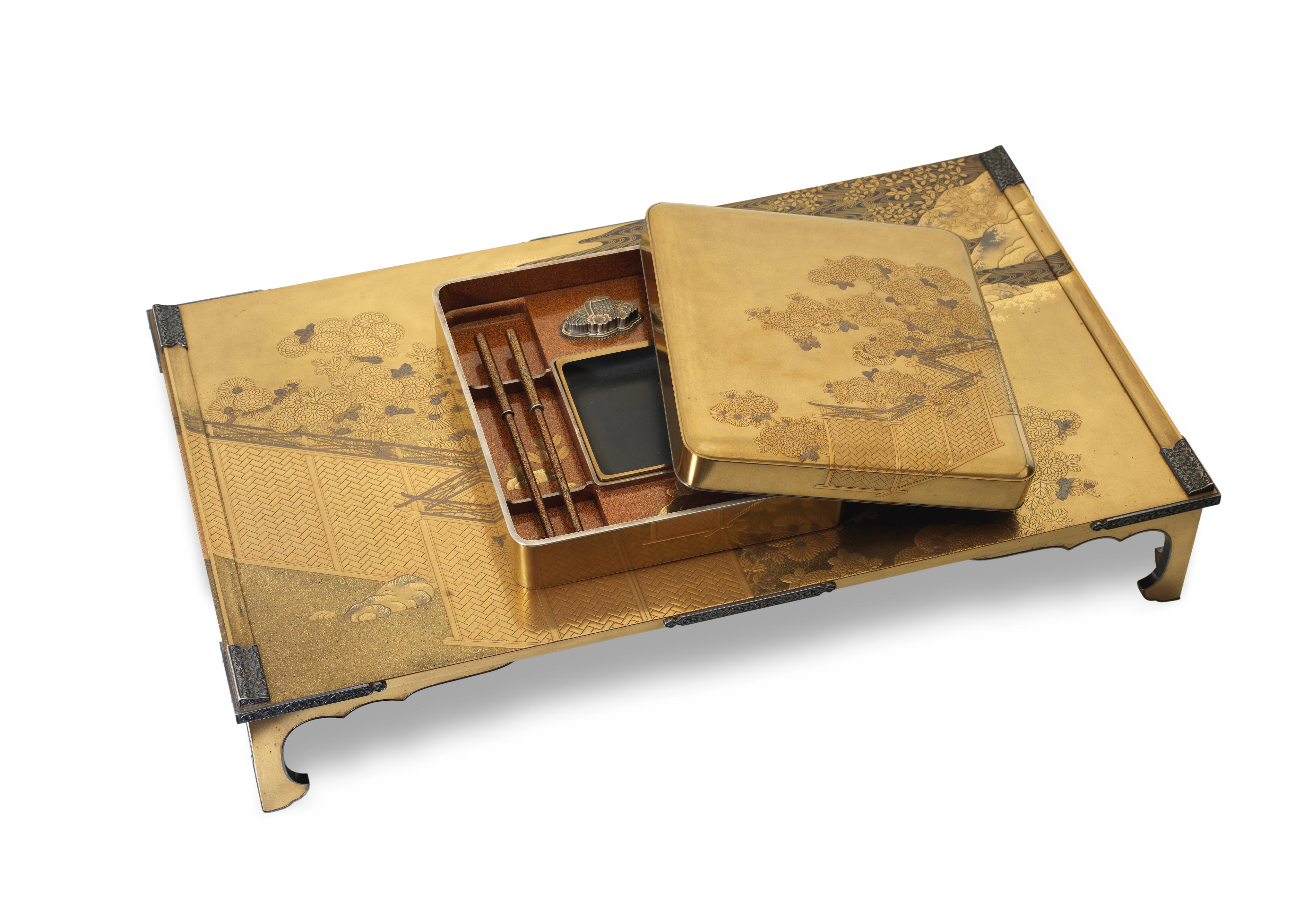


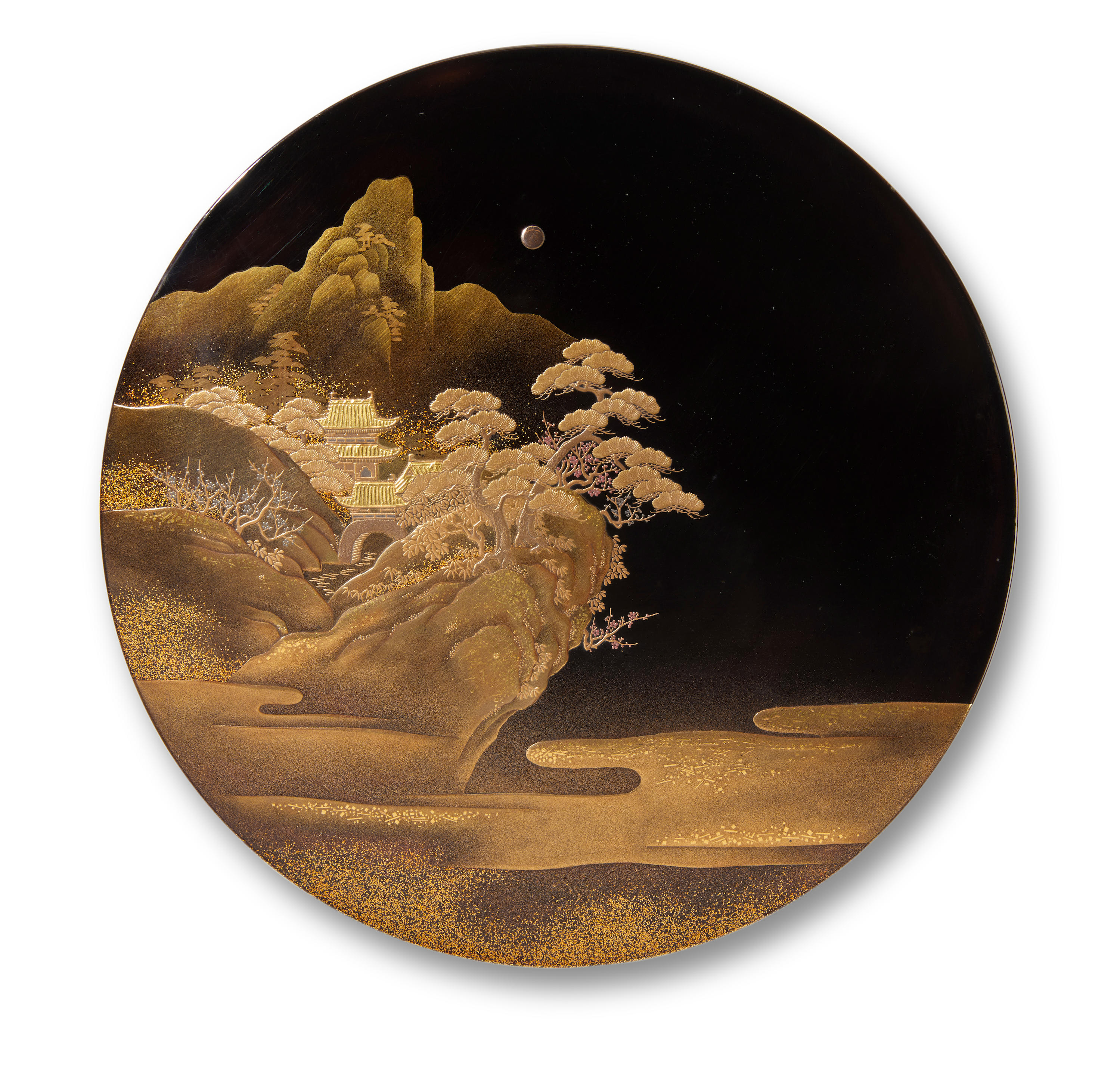





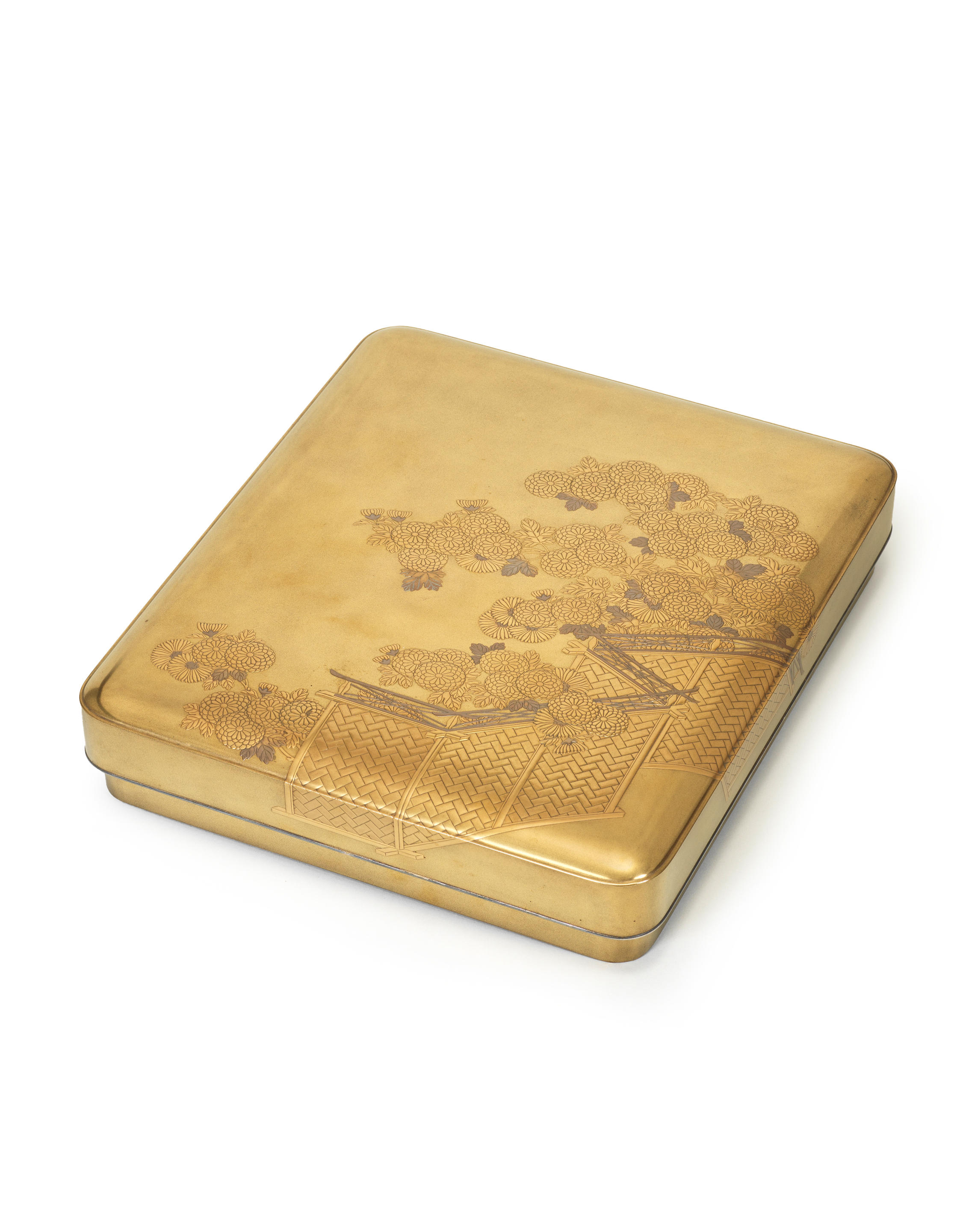
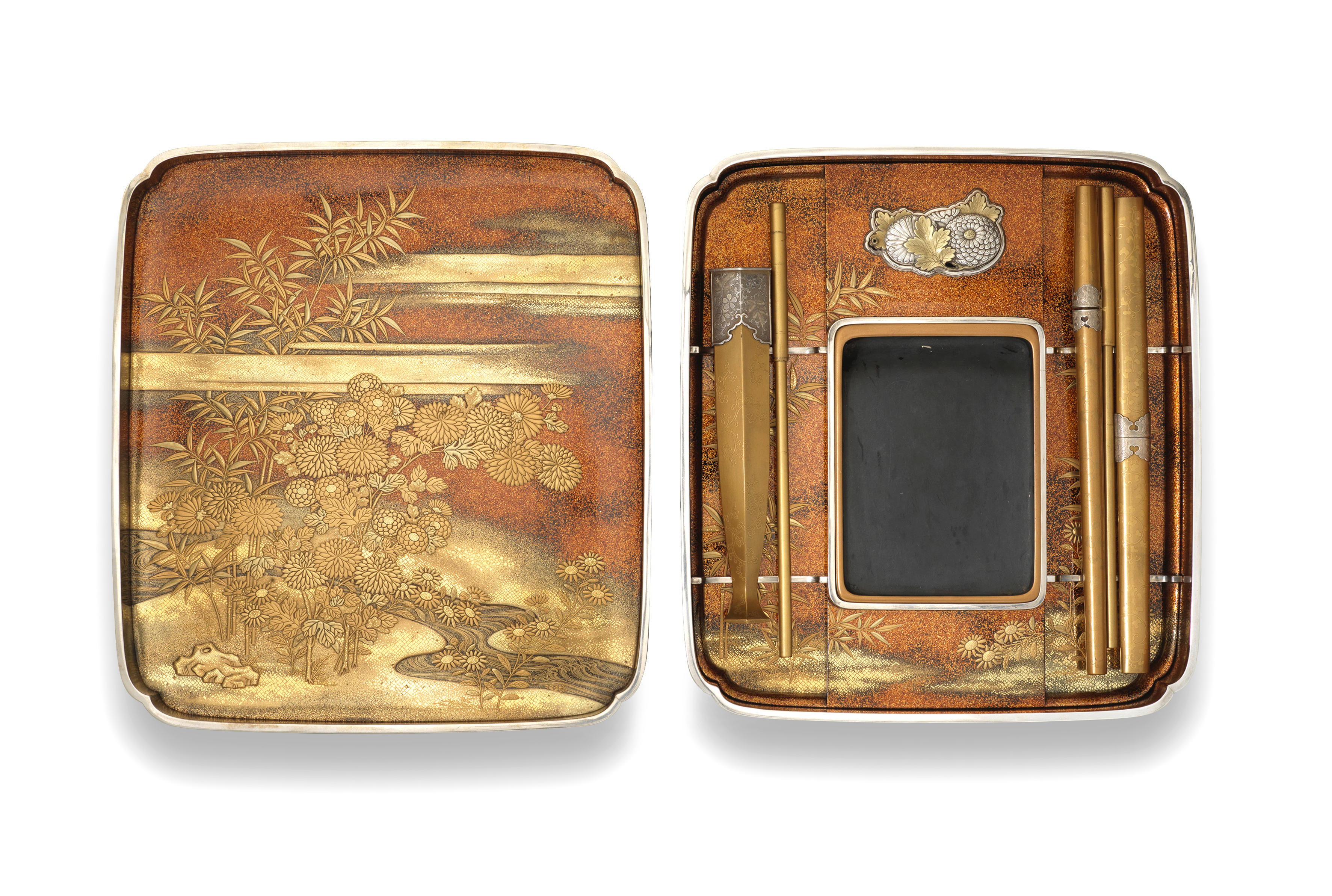
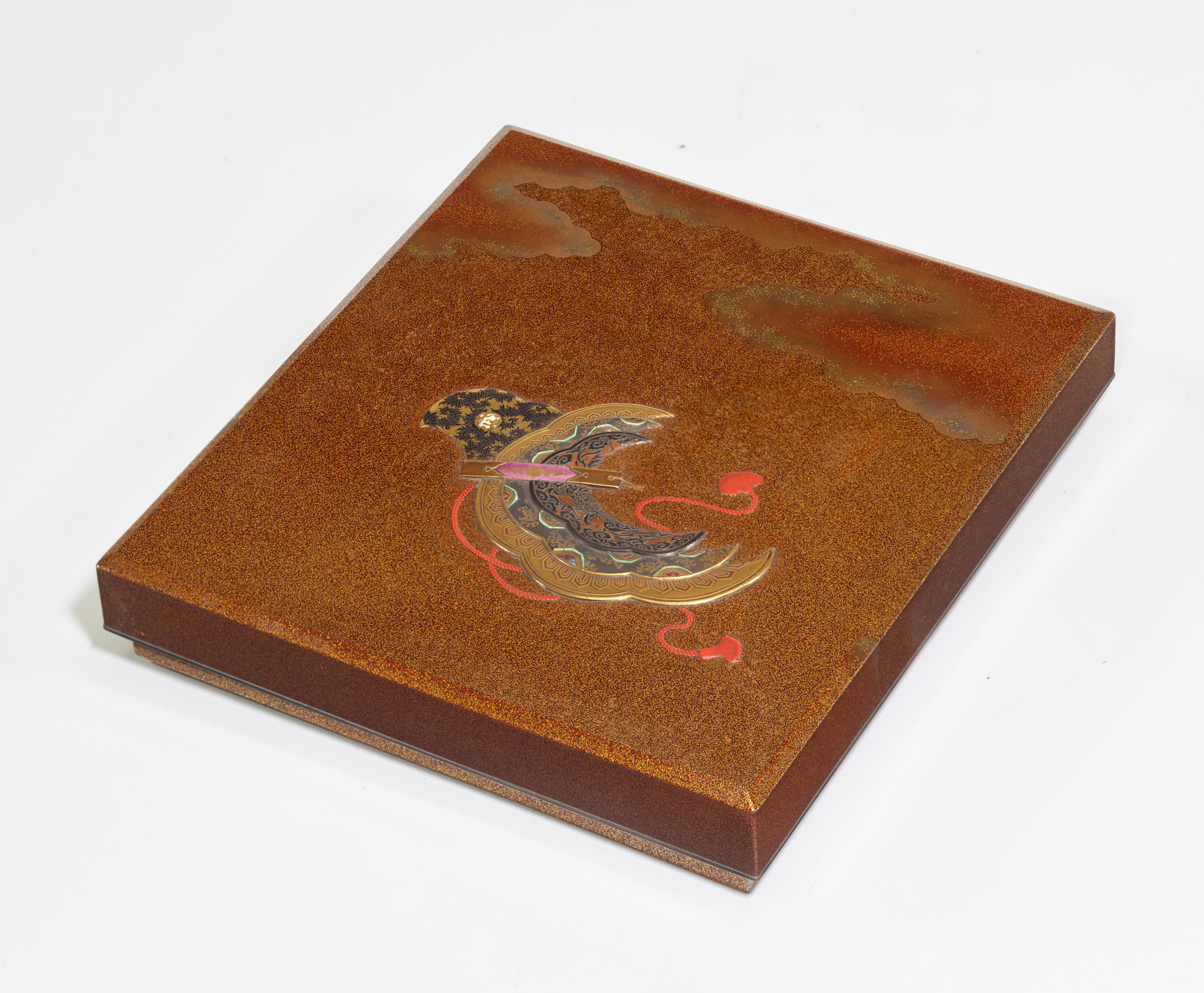
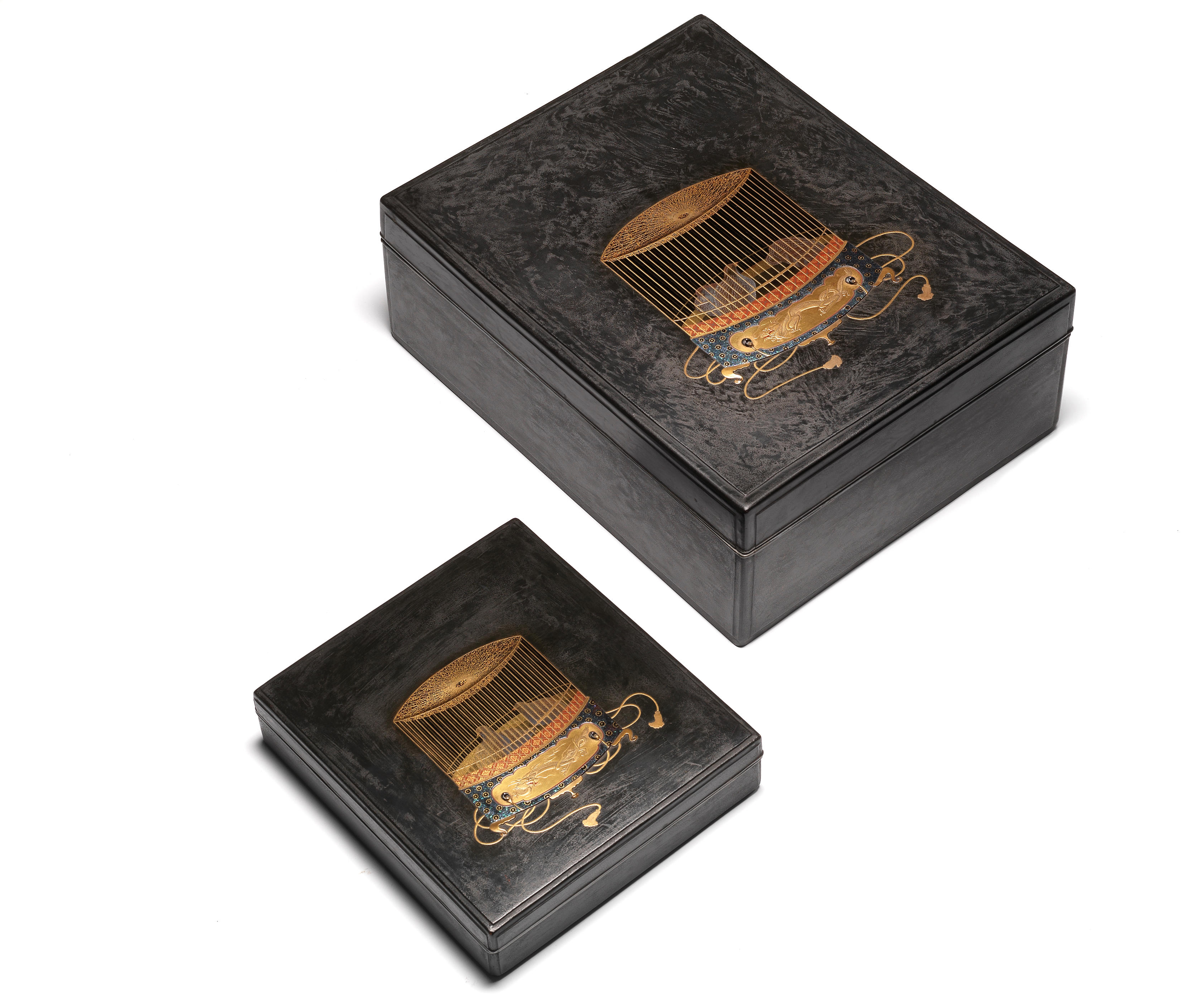

.jpg)
Try LotSearch and its premium features for 7 days - without any costs!
Be notified automatically about new items in upcoming auctions.
Create an alert